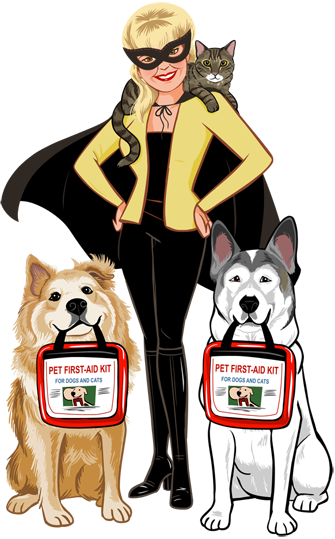
Walking your dog is one of the best ways to keep them healthy, both physically and mentally. However, discomfort during walks can make the experience stressful for your dog and challenging for you. Understanding how to recognize the signs of discomfort is essential to ensure your furry friend stays happy and safe during outings.
Equipping your dog with the right gear can prevent many common issues that lead to discomfort. For example, using top-rated dog harnesses that provide proper support and fit can significantly improve your dog’s walking experience. Along with suitable gear, paying attention to your dog’s behavior and physical cues will help you spot and address any signs of discomfort early.
Physical Signs of Discomfort
Your dog’s body language can reveal a lot about how they’re feeling during a walk. Knowing what to look for can help you identify and address discomfort before it becomes a bigger issue.
Limping or Uneven Gait
If your dog starts limping or walking unevenly, it could indicate pain or an injury to their paws, legs, or joints. Inspect their paws for cuts, debris, or burns from hot pavement, and monitor their movement for any signs of strain.
Excessive Licking or Chewing
Dogs often lick or chew areas where they feel pain or irritation. If your dog repeatedly focuses on their paws or legs during a walk, they may be experiencing discomfort due to sharp objects, salt, or other irritants.
Tucked Tail
A tucked tail is a clear sign of fear, stress, or discomfort. This can be caused by tight harnesses, loud noises, or unfamiliar environments. If you notice this behavior, take a moment to assess the surroundings and adjust accordingly.
Behavioral Signs of Discomfort
In addition to physical cues, your dog’s behavior can signal that something isn’t right during a walk. Be mindful of any sudden changes or unusual actions.
Reluctance to Walk
If your dog stops suddenly, sits down, or refuses to move, it could be a sign of discomfort or fatigue. This may stem from ill-fitting equipment, soreness, or anxiety about the environment.
Frequent Scratching or Shaking
Excessive scratching or shaking during a walk could indicate irritation from a harness or collar. Check for redness, rubbing, or poorly adjusted straps and make necessary adjustments to ensure a proper fit.
Excessive Panting
While panting is normal for dogs, excessive panting can signal overheating, stress, or difficulty breathing. This is particularly important to monitor during hot weather or after intense physical activity.
Environmental Factors That Cause Discomfort
Your dog’s comfort during a walk isn’t just about their health—it’s also influenced by external factors. Recognizing these environmental triggers can help you create a more enjoyable experience.
Hot Pavement
Walking on hot pavement can burn your dog’s paw pads. Test the temperature by placing your hand on the surface for five seconds. If it’s too hot for you, it’s too hot for your dog. Opt for shaded paths or grassy areas during warm weather.
Loud Noises
Busy streets, construction, or other loud noises can cause anxiety in dogs. If your dog seems stressed or hesitant, try walking them in quieter areas to build their confidence.
Crowded Spaces
Parks or paths crowded with other dogs and people can be overwhelming. If your dog shows signs of discomfort in these settings, give them more space or choose less crowded walking times.
How to Address Discomfort
Once you’ve identified signs of discomfort, it’s important to take action to improve your dog’s walking experience. Here are some practical steps you can take:
Check and Adjust Their Gear
Ill-fitting harnesses or collars are a common cause of discomfort. Make sure your dog’s harness is the correct size and adjusted properly. Look for designs that evenly distribute pressure and prevent chafing.
Give Them Breaks
If your dog seems tired or overwhelmed, take short breaks during your walk. Find a shaded area where they can rest, drink water, and relax before continuing.
Monitor Their Paws
Regularly inspect your dog’s paws for cuts, burns, or debris. Applying paw balm can help protect their pads from rough surfaces or extreme temperatures.
Desensitise to Triggers
If your dog is anxious around loud noises or crowded spaces, gradually expose them to these situations in a controlled manner. Reward calm behavior with treats and praise to build positive associations.
Preventing Discomfort on Future Walks
Prevention is always better than cure. By taking a proactive approach, you can minimize discomfort and make walks more enjoyable for your dog.
Choose the Right Equipment
Invest in high-quality gear that suits your dog’s size and activity level. Harnesses with adjustable straps, padding, and reflective materials provide both comfort and safety.
Adjust Walk Times
Plan walks during cooler parts of the day to avoid heat-related discomfort. Early mornings or late evenings are ideal, especially during summer.
Keep Hydration Handy
Carry a portable water bowl and fresh water to keep your dog hydrated during longer walks. Offer small amounts frequently to prevent overheating.
Pay Attention to Their Mood
Every dog has different needs and preferences. Pay attention to your dog’s reactions during walks and adjust your routine to suit their comfort level.
Walking your dog should be a joyful experience for both of you. By recognizing and addressing signs of discomfort, you can ensure your furry friend stays happy, healthy, and excited for every outing. Whether it’s adjusting their gear, choosing quieter routes, or taking regular breaks, these small changes can make a big difference in your dog’s overall well-being.









